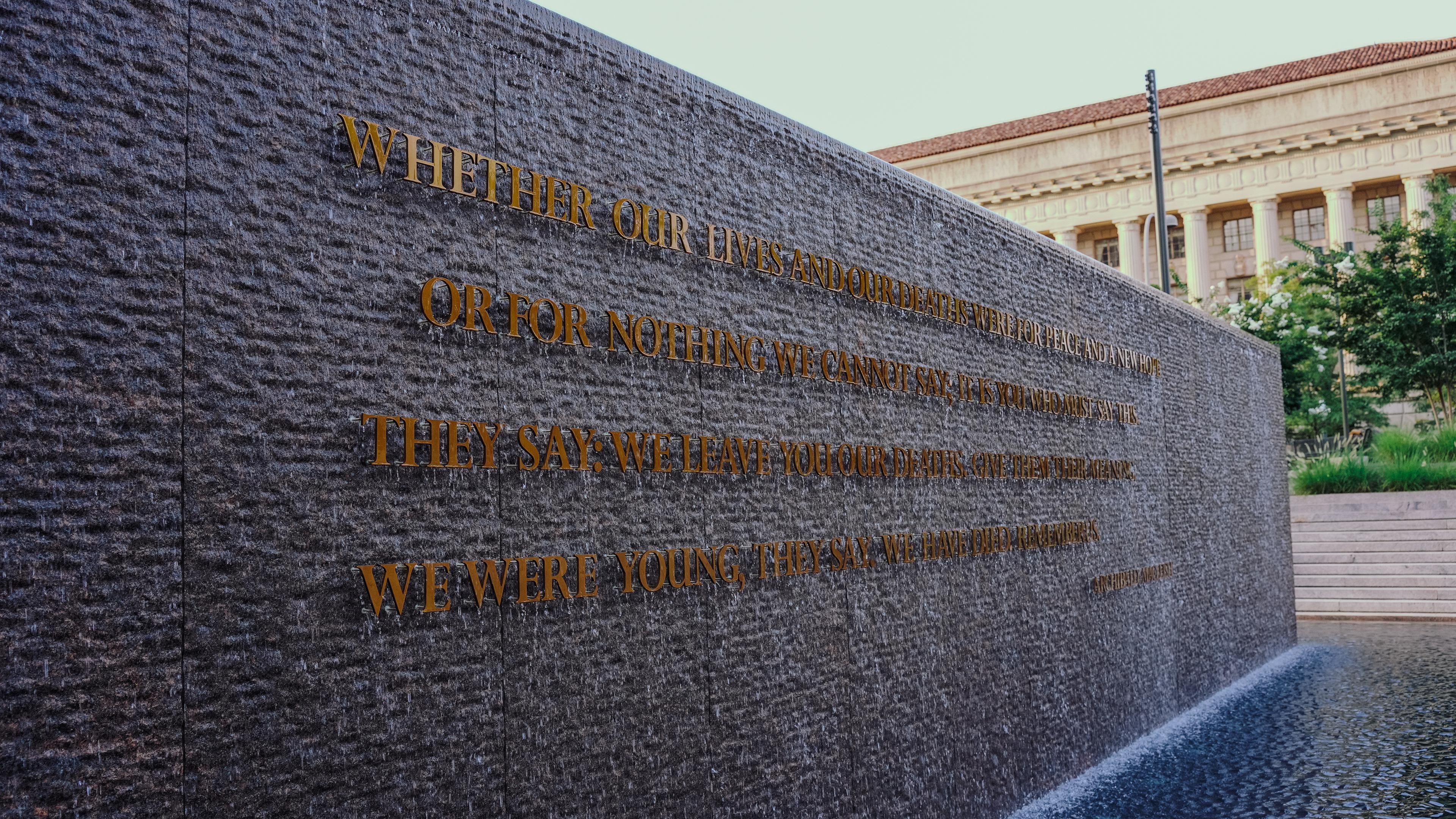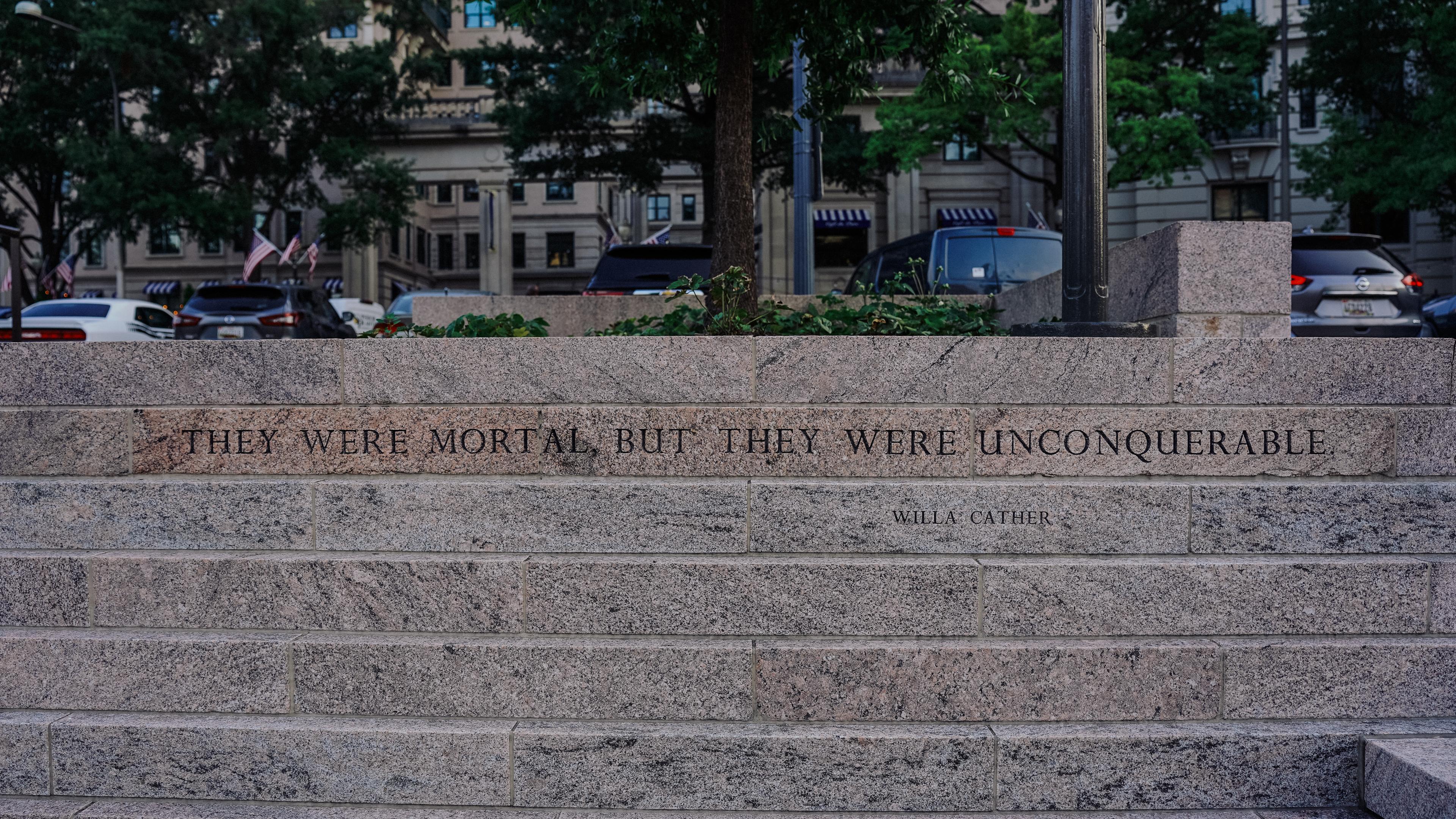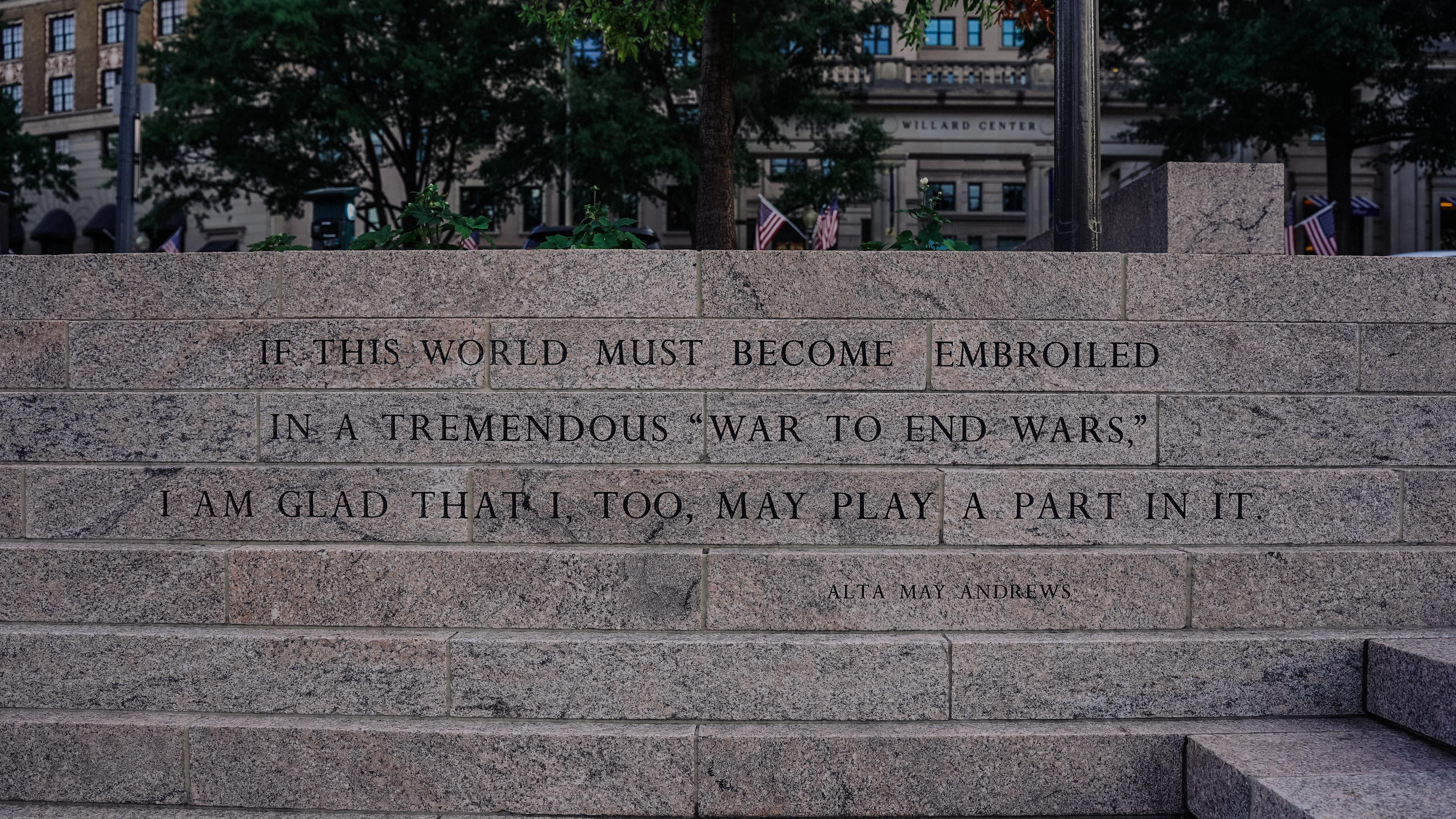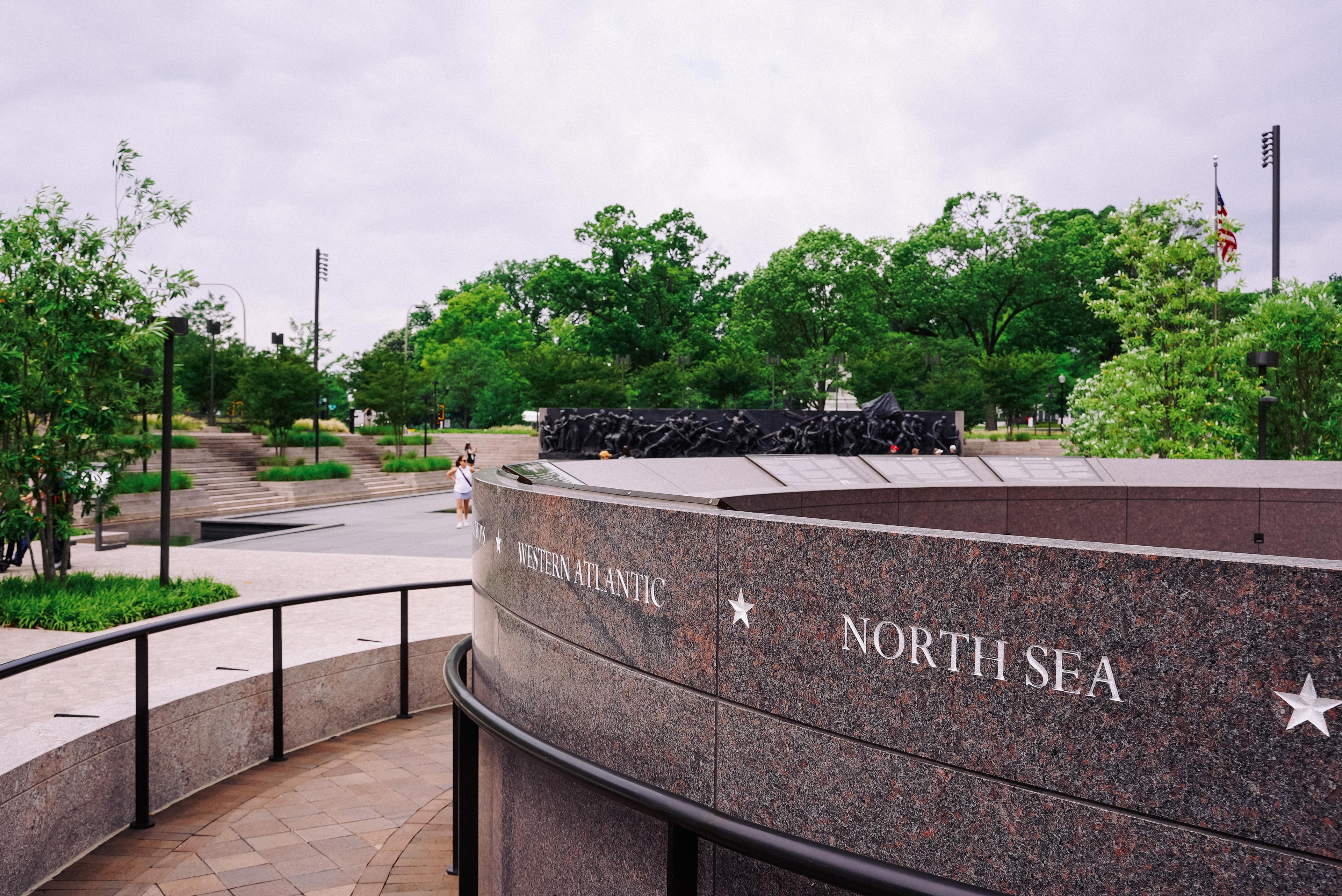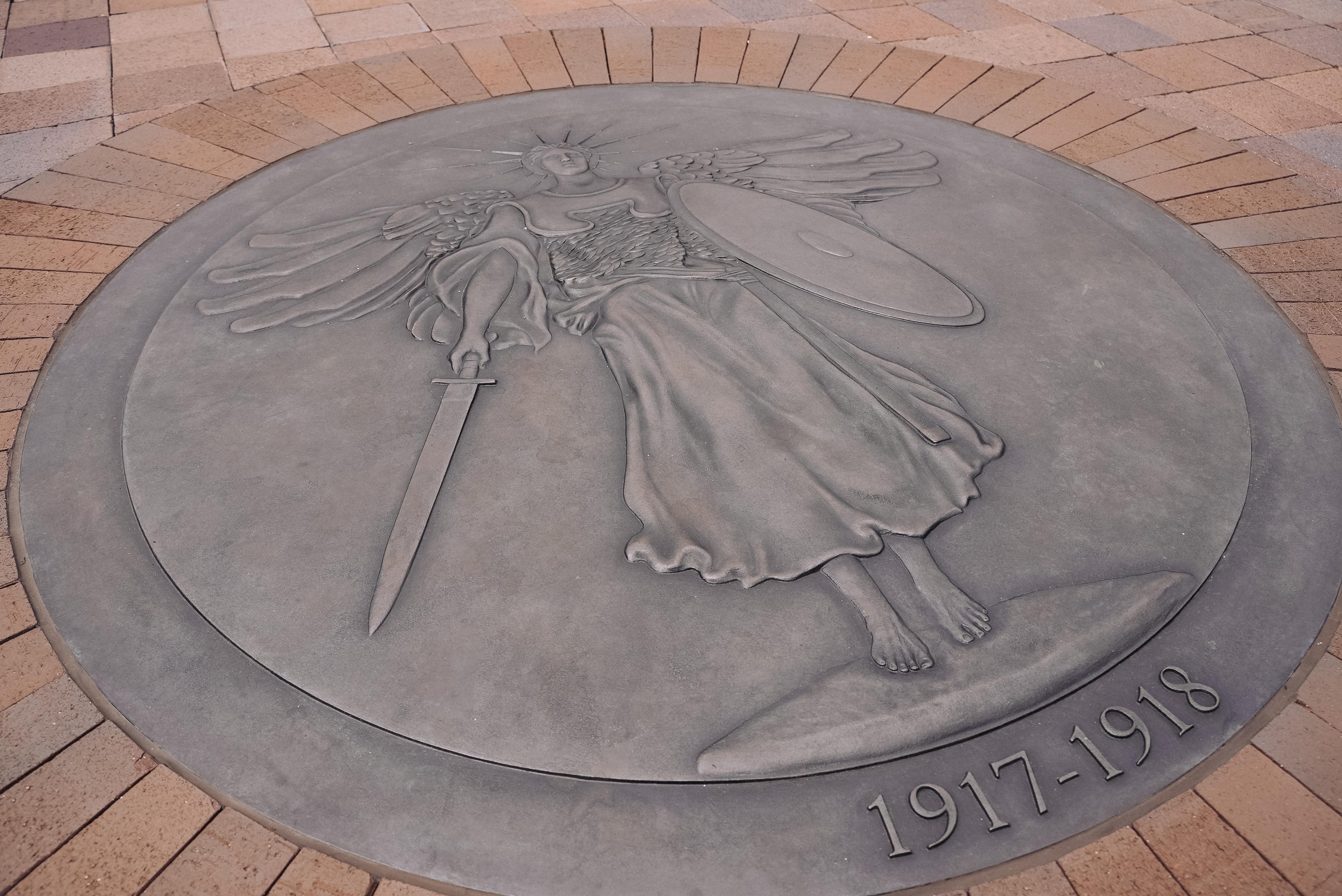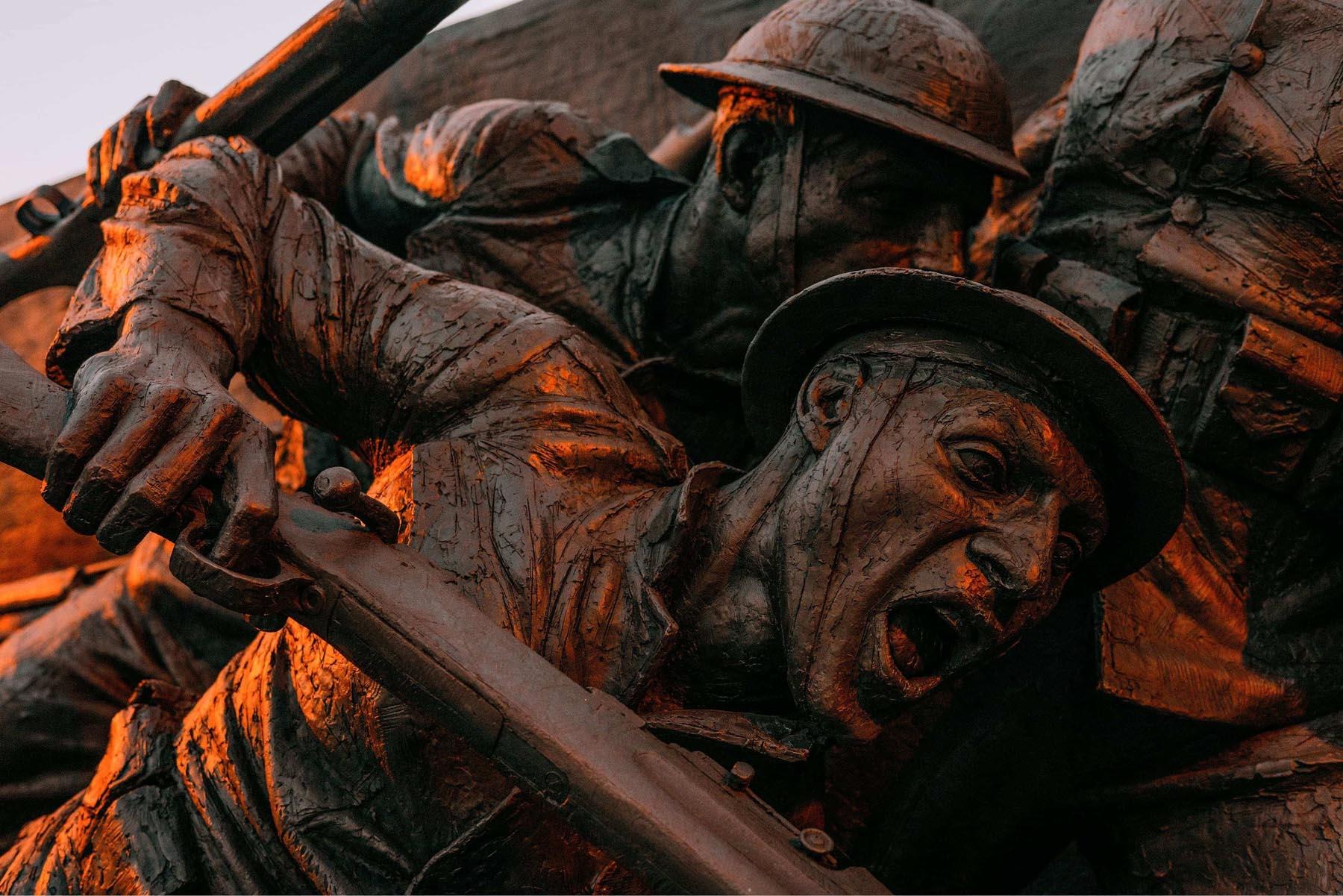


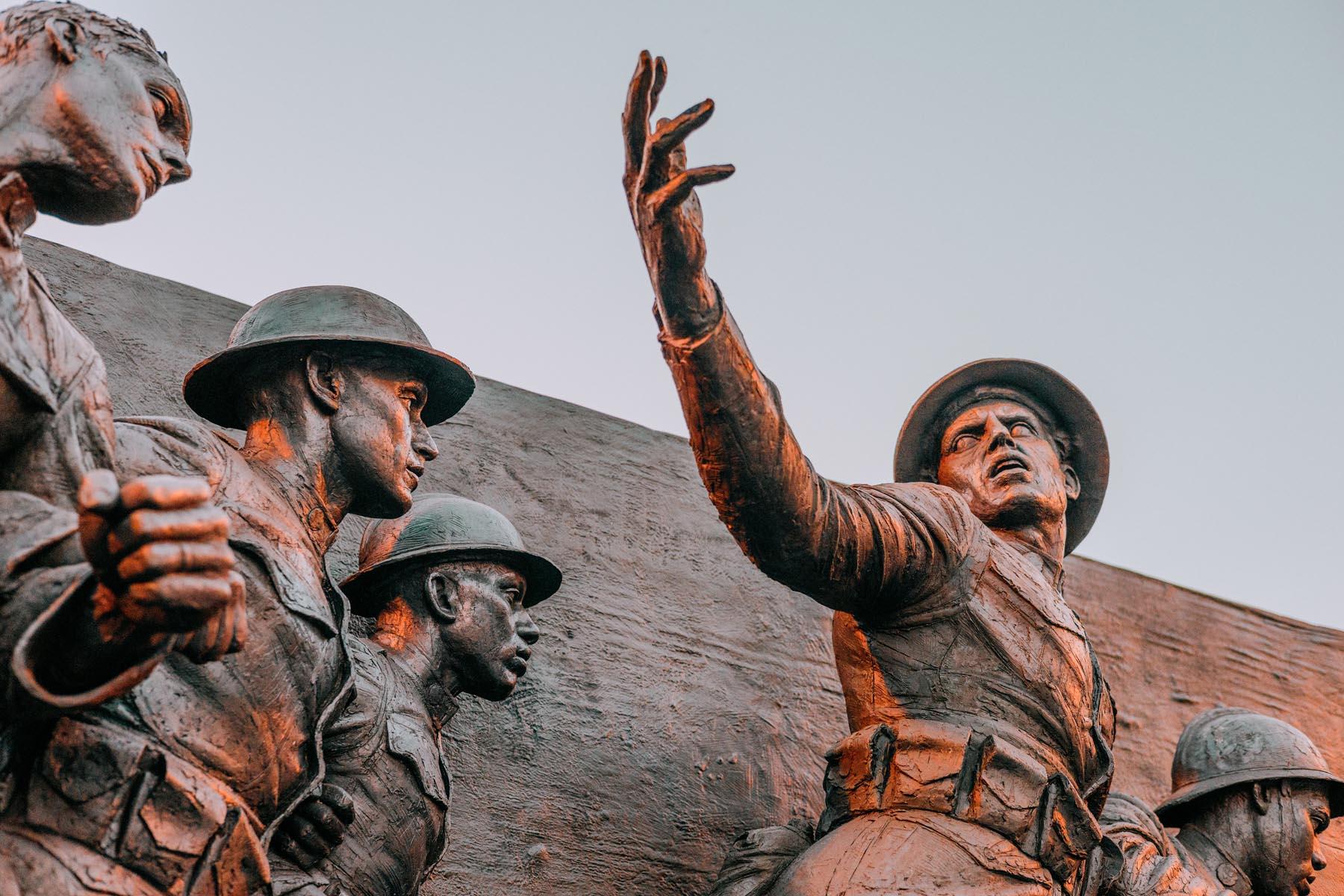
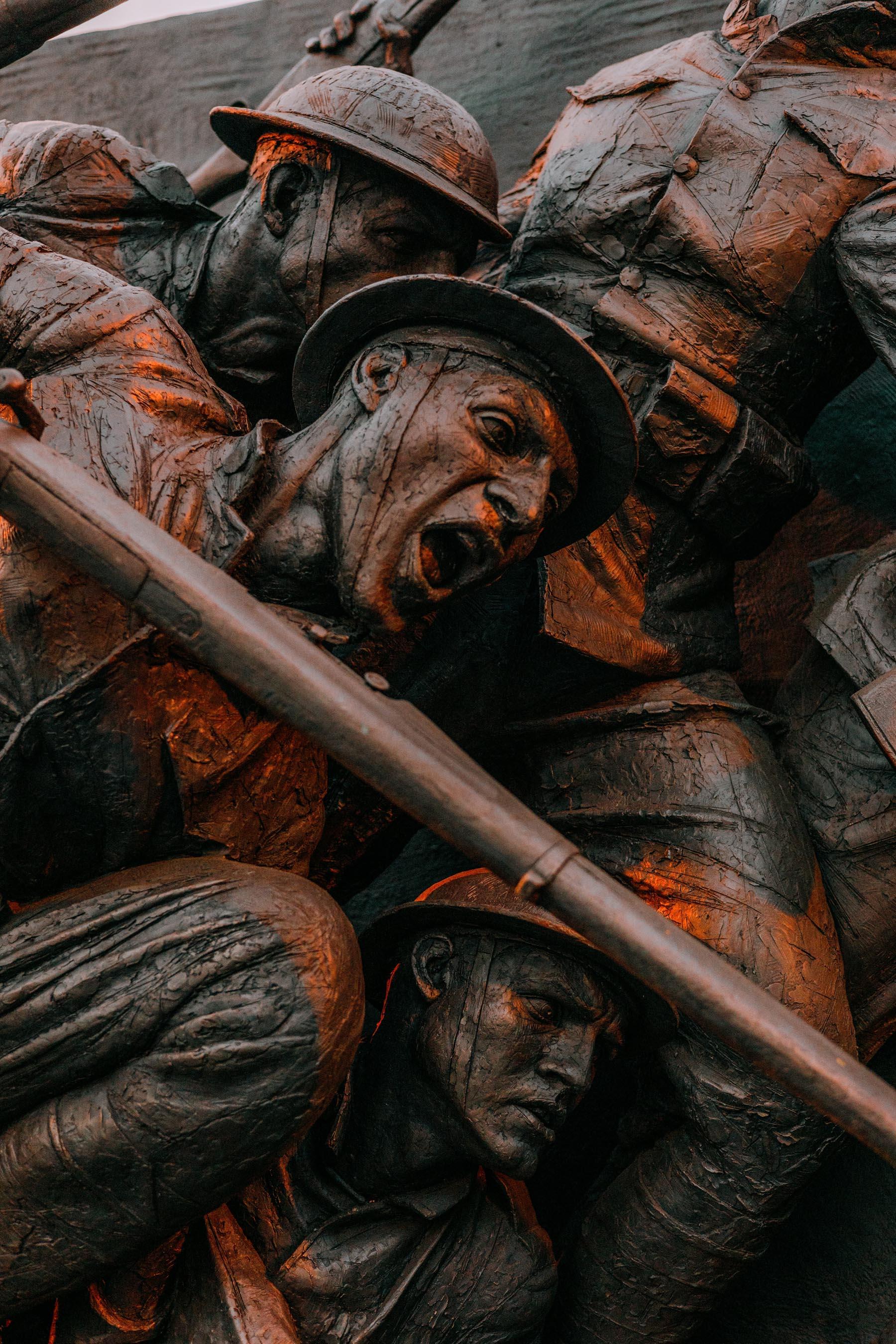
World War I Memorial
1449-1455 Pennsylvania Avenue NW, Washington, D.C.
Amenities
- Wheelchair accessible
- Open 24 hours
- Food & drink — Retail options nearby
- Restrooms — Available at the White House Visitor's Center across the street, 7:30AM–4:00PM
During the government shutdown, open-air Memorials will generally remain accessible to visitors. Restrooms, bookstores, gift shops, and information kiosk services may be suspended. For more information, please visit: doi.gov/shutdown.
The World War I Memorial memorializes the service of the 4.7 million American citizens and residents who contributed to the Allied war effort in World War I in the American Expeditionary Forces.
World War I (1914-1918) affected Europe, Africa, the Middle East, the Atlantic Ocean, and the Asia-Pacific regions, proving to be one of the deadliest conflicts in human history. There was an estimated nine to eleven million military and six to thirteen million civilian deaths — with an even higher total when including non-fatal casualties and the 1918 Flu pandemic, which was exacerbated by the war. Additionally, the World War I Memorial honors the contributions of American veterans who were deployed to the Russian Civil War in northern Russia and Siberia.
Building upon the site of the previous Pershing Park (named for commander of the American Expeditionary Forces during WWI John J. Pershing), the Memorial was opened to the public in April 2021 and completed with the installation of the sculpture titled “A Soldier’s Journey” in September 2024.

Take a virtual stroll through this National Mall site
History
Timeline of events
Greece, Serbia, Montenegro, and Bulgaria defeat the Ottoman Empire during the Balkan Wars, removing its European provinces. Serbia's expanded influence and push for pan-South Slavic unity (Yugoslav) indirectly weakens the Austro-Hungarian Empire.
Archduke Franz Ferdinand of Austria, the heir presumptive to the Austro-Hungarian throne, is assassinated in Sarajevo by Bosnian Serb Yugoslav nationalist Gavrilo Princip.
The July Crisis takes place, a series of military and diplomatic escalations in the fallout of the Sarajevo assassination. The complex web of alliances, treaties, and other relationships of WWI were tested or created over several weeks prior to open hostilities.
The sinking of the RMS Lusitania kills 128 Americans. While this event tends to be overemphasized as a reason for U.S. entry into WWI, it did mark a notable turning point for American public opinion.
German State Secretary for Foreign Affairs Arthur Zimmermann publicly admits that the Zimmerman Telegram is genuine.
Congress declares war on the German Empire.
The SMS Cormoran, a German vessel, is scuttled in Guam after being interned at the start of WWI (prior to the U.S. entering the war). This was the only hostile encounter between American and German forces in the Asia-Pacific theater. While the U.S. Navy did have a presence across East Asian treaty ports, the Philippines, and the South Pacific, most of the Allies’ military actions in this theater were undertaken by Japan and the UK.
The Selective Service Act of 1917 comes into effect, and all male Americans ages 21 to 30 are required to register for selective service. The age range is expanded to include 18 to 45 in August 1918, while also banning further volunteer enlistment. By the end of the war, 2.8 million Americans were drafted.
John J. Pershing arrives in France with the American Expeditionary Forces.
The 15th New York Infantry Regiment of the New York National Guard is called into federal service as the 369th Infantry Regiment, better known as the Harlem Hellfighters. The regiment spends a U.S military record of 191 consecutive days on the front line, suffering the most casualties of any American unit, and becomes the first Allied force to cross the Rhine into Germany in the war.
Congress declares war on Austro-Hungarian Empire.
The German Spring Offensive (Kaiserschlacht) takes place—Germany makes a desperate offensive in northern France/southern Belgium before American troops can land on the continent en masse.
The 332nd Infantry Regiment arrives in Italy. While most Americans fighting in WWI were limited to the Western Front, the 332nd became the only unit to serve in the Italian Front. While small in numbers, the regiment supported the Allied forces in battles such as the Battle of Vittorio Veneto, which played a key role in the collapse of the Austro-Hungarian Empire.
The Meuse-Argonne Offensive, part of the larger Hundred Days’ Offensive, is the final Allied offensive that ends the war. This was also the main campaign for which the American Expeditionary Forces are known and is the deadliest campaign in U.S Army history—with more than 122,000 American casualties (of which 26,277 were killed in action).
The American Expeditionary Force Siberia and AEF-North Russia land 13,000 troops in Siberia and Northwestern Russia as part of the Allied intervention in the Russian Civil War.
The Treaty of Versailles is signed, officially ending the war with Germany.
The Treaty of Saint-Germain-en-Laye is signed by the Republic of German-Austria.
The Treaty of Neuilly-sur-Seine is signed by Bulgaria.
The Treaty of Trianon is signed by the Kingdom of Hungary.
The Treaty of Sèvres is signed by the Ottoman Empire, the last of the major treaties signed with the Central Powers, fully ending the war.
Pershing Park is built alongside Freedom Plaza and opened to the public.
The statue of General John J. Pershing is erected and dedicated.
Frank Buckles, the last surviving American veteran of WWI, passes away.
President Barack Obama signs legislation establishing the United States World War I Centennial Commission into law.
A Congressional bill, The World War I Memorial Act of 2014, designates Pershing Park as the location where the memorial will be built.
The World War I Centennial Commission launches the design competition for the memorial.
The design competition jury announces five finalists.
The design competition jury selects "The Weight of Sacrifice" by Joseph Weishaar as the winning entry.
The World War I Centennial Commission holds a ceremonial groundbreaking event at Pershing Park.
The Commission of Fine Arts gives its approval to a modified memorial design.
The U.S. flag is raised at the memorial and President Joe Biden holds a virtual opening ceremony.
“A Soldier’s Journey” sculpture finishes installation and is unveiled to the public.
Key Features
The 1.76-acre World War I Memorial honors the Americans who served their nation through many notable features—but the one most recognized is a sculpture titled “A Soldier’s Journey.” Installed years after the memorial's public opening, Sabin Howard's fifty-eight-foot bas-relief sculpture features thirty-eight figures depicting an American soldier's journey and the larger American experience of World War I.

Other notable features include:
Reflection Questions
High school learners: Our nation’s past is complex and often provokes reflection, especially as we look to the future.
Here are a few questions to inspire deeper thinking:
- Was World War I avoidable? Why or why not?
- What are some examples of unintended consequences of the Treaty of Versailles?
- Does A Soldier’s Journey represent the larger American experience of the war? Why or why not?
Educational Activities
Other Resources
Interested in learning more? The following links will provide you with additional context and information:
- National Park Service: World War I Memorial
- National Park Service: Pershing Park
- National Park Service: World War I Overview
- National Park Service: WWII Parks across the US
- National Park Service: Pennsylvania Avenue
- National Park Service: Freedom Park
- Smithsonian American Art Museum: The Bex Eagle Statue
- The Doughboy Foundation
